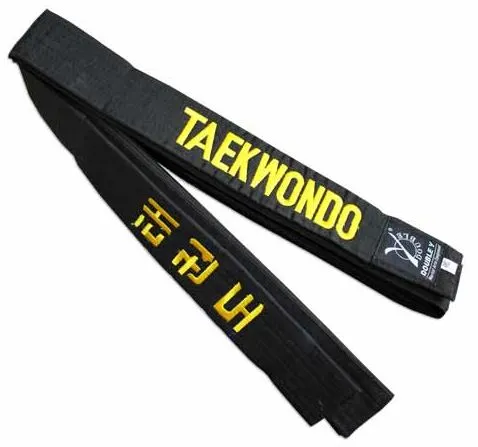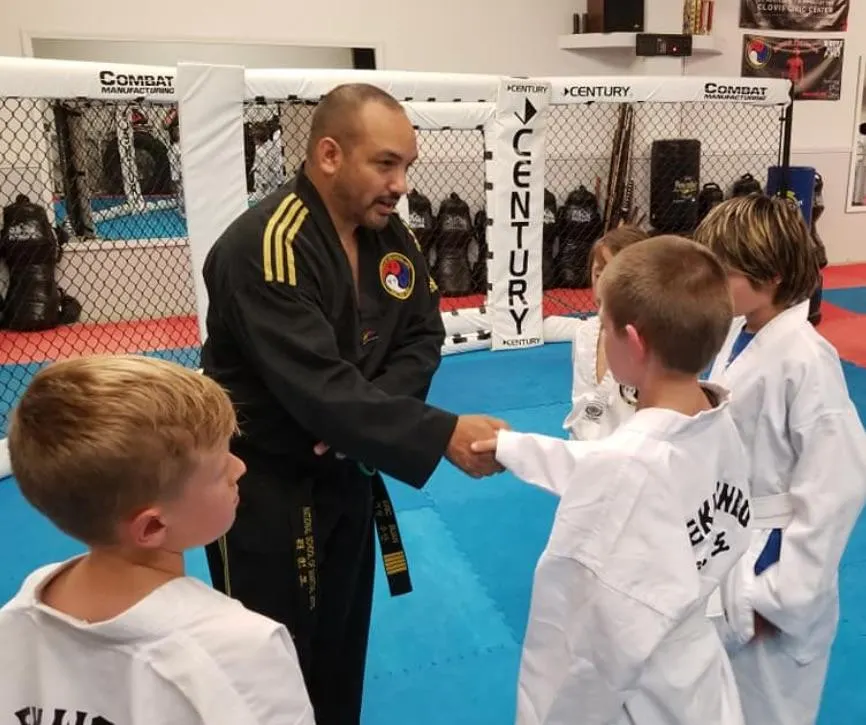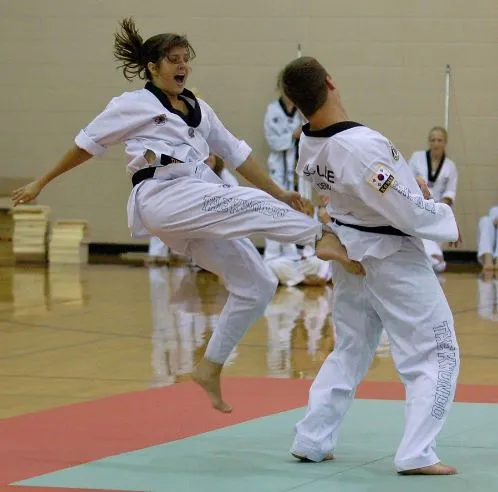
Issue 3 October 7, 2022
Welcome to the best place to find your up to date global Taekwondo News!
Welcome to the third issue of TAEKWONDO TODAY! We aspire to become the source of Taekwondo news from around the globe. it is our intent to provide timely coverage of the complete martial art of Taekwondo - Traditional Taekwondo and Sport Taekwondo.
TAEKWONDO TODAY will have contributing reporters on each continent around the globe, enabling us to provide our readers with global Taekwondo news articles. We shall endeavor to provide informative articles related to Traditional Taekwondo, as well as articles relating to Sport Taekwondo. It is not our intent to provide in-depth coverage of Sport Taekwondo events, as it relates to tournament coverage. Rather, we will endeavor to provide news articles relating to the activities and operations of Taekwondo organizations, in addition to articles that may feature the activities and operations of Taekwondo schools (Dojangs), as well. We will also provide feature articles on Taekwondo pioneers globally, as well as other prominent Taekwondo persons of note.
At TAEKWONDO TODAY we would like to become your daily go-to source for factual information and reporting regarding Taekwondo, whether it be historical/traditional, or modern sport Taekwondo coverage. We will include opinion articles (OP/ED) that may spur discussions, as well as Public Opinion Polls that seek to elicit your thoughts and opinions on a variety of Taekwondo subject areas.
FROM THE PUBLISHER
Anne Chase

Hello again!
I think you will enjoy this issue. Usually this is the place a publisher gives an overview of the articles. I’m not going to do that (this time.) Grandmaster Harris and Master Pejo do a great job making the articles pop off the page, er, screen. I’m here, this time, asking you to join in creating content. We’ve appreciated the notes of congratulations and encouragement you have sent. What we’d really love to receive are some Letters to the Editors. You don’t even have to agree with us! Let us know what you think about what is going on, what went on, and what should go on in Taekwondo.
As always, thank you for joining us and sharing our love of Taekwondo
TAEKWONDO PIONEER SPOTLIGHT
GRANDMASTER JHOON RHEE

Grandmaster Jhoon Rhee was born on January 7, 1932, in Korea, during the period of Japanese occupation. He began training in the martial arts at the age of 13 in 1945 without his father's knowledge. Rhee received martial art training under Nam Tae Hi and graduated from the Chung Do Kwan. While an officer in the Korean Army, he traveled to attend Southwest Texas State College in 1956, and later returned to attend the University of Texas at Austin for an engineering degree.

KUKKIWON ELECTIONS RESULT
BREAKING] The 6th President's election, Lee Dong-seop was elected
Candidate Lee Dong-seop (born in 1956) was elected in the 6th National Flag Director's election held on Thursday, October 6.
Of the total number of 1,197 electors, 944 participated in the election, with 0 invalids with a turnout of 78.86%.
For the full article click HERE.

Training Tip: GOAL SETTING
By: Sammy Pejo
Like many things new, the start of your Taekwondo journey can be very exciting. While we have all seen incredible Martial Art skills in the movies, we know how difficult those moves are as we try to navigate our own strength, flexibility and balance. Regardless of your age and skill level, it is important to understand and set expectations for your Taekwondo training.
Many use the excuse “I’m too old to do that!” or “I will wait for my child to get a little older so he can listen better”. But the reality is Taekwondo can help anyone of all ages and abilities – as long as you understand the goals you will be setting for yourself (or children) in Taekwondo.
Some students have dreams of becoming an Olympic Gold Medalist. Many students wish to learn how to defend themselves. Some students are looking for better physical conditioning, strength, and flexibility. Parents are always looking for ways to help reinforce the values of respect and discipline they are teaching their children at home. Some simply enjoy the family atmosphere that is created at the dojang. Whatever your reason for your Taekwondo training, make sure you set your GOALS!
Once your goals are set, the next step is to discuss them with your Masters and Instructors. Their job is to help you reach your goals, and by sharing them, they will help you stay accountable for success. A simple way to evaluate is to see if your goals are SMART goals:
Specific – Instead of “I want to gain weight”, be specific with something like “My goal is to gain 5 pounds”
Measurable – How will you measure if you are moving towards your goal or not? If you simply say “I want to kick higher” then the goal is not crystal clear. Instead, by saying “I want to kick 2 inches higher”, your brain has a very specific goal to work towards.
Attainable – Can you really reach your goal? If my goal is to compete in the upcoming Olympic Games, but I’m 50 years old, then that goal probably is not an attainable one for me. Realistic goals with incremental steps will help with the feeling of accomplishment, which will continue to motivate towards your goals.
Responsible – Check to confirm your goal is responsible. If you say “I want to lose 25 pounds by the end of the week” then this will more than likely damage your health. But losing 25 pounds with a well laid out plan would be a much more responsible way to lose weight.
Timeline – Always have a timeline for your goals. If you say “My goal is to earn my Black Belt someday” then you leave the possibility of taking unnecessary prolonged breaks from your training, and then 10 years later you still haven’t earned your Black Belt. If you say “My goal is to earn my Black Belt in 3 years” then you have a definite timeline and will stay motivated to work diligently towards your goal.
Of course, share your goals with your Masters and Instructors so they can help guide you on the best way to accomplish your goals, and how to get the most benefits from your Taekwondo journey.

DOJANG SPOTLIGHT: A FORCE OF ONE
By: Casey Jones
Master Eric Suan, 5th Dan Master Instructor, is the owner of Force of One Martial Arts School in Clovis, New Mexico. His father grew up in Hawaii but was sent to California when he joined the military. Eric grew up at the George Air Force Base, located in Victorville, CA. At age 6 he met his first Tang Soo Do instructor, Master Robert Price. Master Price was trained in Korea in Tang Soo Do and was later stationed in Thailand where he trained in the Lotus style. Price was a good friend of Eric’s father and lived nearby at the same Air Base.
Eric would walk out his home’s door, jump in Price’s car, and together they would drive to the school. Master Price was one of the first instructors to bring Tang Soo Do to the United States. He opened his school in 1974 after returning from Thailand, where he was the first American to test for a black belt in 1972. Eric’s first instructors were all military, and trained in other countries, bringing back to the United States authentic style training in various disciplines.
From the age of 9 to 11, Eric studied boxing at the Victorville YMCA which was in a rough neighborhood. The boxing instructor was Thom Price, a former Golden Glove Champion, who had injured his hand in a car wreck and could no longer compete professionally. Because of this superior level of training, Eric competed in boxing competitions and demos all over the local San Bernadino area.
Eric decided to return to Hawaii where he married and had his first child. But in 1988, he sent his wife and child back to the mainland. He began working three jobs and at first tried living with friends. But he soon realized that their negative lifestyle of drinking and drugs made the living arrangement too difficult. Over the next three months, he slept in his car before joining the air force. Being stationed in various Asian countries, the military gave him a structure and environment that was conducive to studying with authentic and renowned martial arts instructors.
Eric was stationed in Okinawa, Japan, for 11 years, where he could train, compete, and instruct under Joe Giampietro and continues to teach Master Giampietro’s lessons even today. As a Master Sergeant, Eric retired from active duty at Cannon Air Force Base, in Clovis, NM after completing 22 years of active duty. He began instructing in 1998, then opened his own school, in 1998. Force of One specializes in Olympic Style Taekwondo, Mixed Martial Arts, Brazilian Jiu Jitsu, Cage Fitness, Weapons, and Little Dragons. The school wins the Best of Clovis Award, year after year.
He has formally tested with Masters and Grand Masters from both the World Taekwondo Federation and the United States National Taekwondo Federation and several more. Master Suan is certified with the NM Athletic Commission as a Referee/Judge/Manager/Trainer for Mixed Martial Arts with the NM Athletic Commission, and he is certified as a Manager/Trainer with the Texas Athletic Commission is Certified as a Manager/Trainer for Mixed Martial Arts.
His teaching philosophy combines the gentleness of a mother and the toughness of a father. He is never critical but builds respect with his students and calls them each by name. The students’s faces glow with pride when he focuses on their achievements. He pays close attention to details in the execution of the forms and patiently trains each student. He remains calm in tense situations and stresses the importance of the student’s safety at school, home, and at the dojang. Videos are shown in class warning of stranger danger. The students are also, taught the importance of taking action appropriate for their age and ability, to help others, when there is a crisis of any kind.
The classes include a variety of drills, yet warmups and the forms remain consistent in order to instill both muscle and mental memory and accuracy. Eric often explains the reasons behind different moves. This makes it easier for even the youngest students to grasp the reason why perfecting the move is important and it encourages them to practice. The school is a safe haven from some of the negatives of society and offers a type of camaraderie for students of all ages.
Force of One, 605 Commerce Way, Clovis, NM 88101

BENEFITS OF RISK MANAGEMENT IN TAEKWONDO
(Part 1 The Students' Perspective)
By: Robert K. Fujimura
Whether you are training in class, competing in tournaments, teaching a program or managing school, how can the concepts of risk management make things safer, predictable and more enjoyable? The “risk management” identifies, evaluates, prioritizes, and minimizes risk (the probably of a certain outcome, i.e. injury, etc.) Simply put, life always involves a certain amount of risk. How we deal with it is our risk management. Not surprising, Taekwondo has a certain amount of risk. Our ability to weigh the risk along with the reward helps us chart our path.
In weighing the benefit with the risk for the athlete/student, we can evaluate by look at three perspectives.
Acceptance – Avoidance – Reduction
Acceptance – We participate with an activity because we have determined the benefits outweigh the risk. Inherent to Taekwondo is risk, however the benefits of better health, improved mental clarity, enhanced social skills, self-defense and personal enrichment will tip the scale for the new or practicing Taekwondo enthusiast as we accept the risk.
Even within our practice of Taekwondo, various activities may arise to question our participation. Should we compete (perhaps the fear of injury or embarrassment of loss, etc.) may drive our decision.
Avoidance - There may be activities that we consider too risky and completely avoid. In training, the student may have injuries that preclude participation or make his involvement too stressful on his body. The master that understands the training regime will often consider the conditioning, health history, goals, or skill level to assist in the decision. Knowing and understanding your limitation helps to sort through the issues.
Reduction - More often, rather than avoidance, we can find ways to reduce the risk. Within the more recent developments of “acrobatic demonstrations” of Taekwondo the incorporation of special training surfaces, athlete spotting, and special equipment (long reaching holders, consistent sizing for boards, landing pad, etc.) are examples of how a relatively higher risk techniques are adjusted to reduce the risk of injury. The high flying taekwondoist does not eliminate the risk but rather uses techniques and tools to minimize injury.
It has been said that an “injury” does not occur at the time of the break, sprain, cut or bruise, but rather because of previous incorrect practice, patterns, or execution of the technique. This is to say that instruction from an expert (your master) can make a world of difference down the road. Always stay “coachable” as your instruction may move or adjust minor areas of a technique. These adjustments may correct the possibility of injury.
Wear the correct equipment. Modern Taekwondo (and the equipment) has standardized the level of protection. From proper hygiene (for your body, uniform, and equipment) to ensuring that you wear properly fitted protective equipment, this is a line of defense. Having chose a school with a strong teaching staff, well maintained training environment and safe standards, you should rely on their expertise and let them guide you through process of learning and training correctly.
Taekwondo Today © 2022